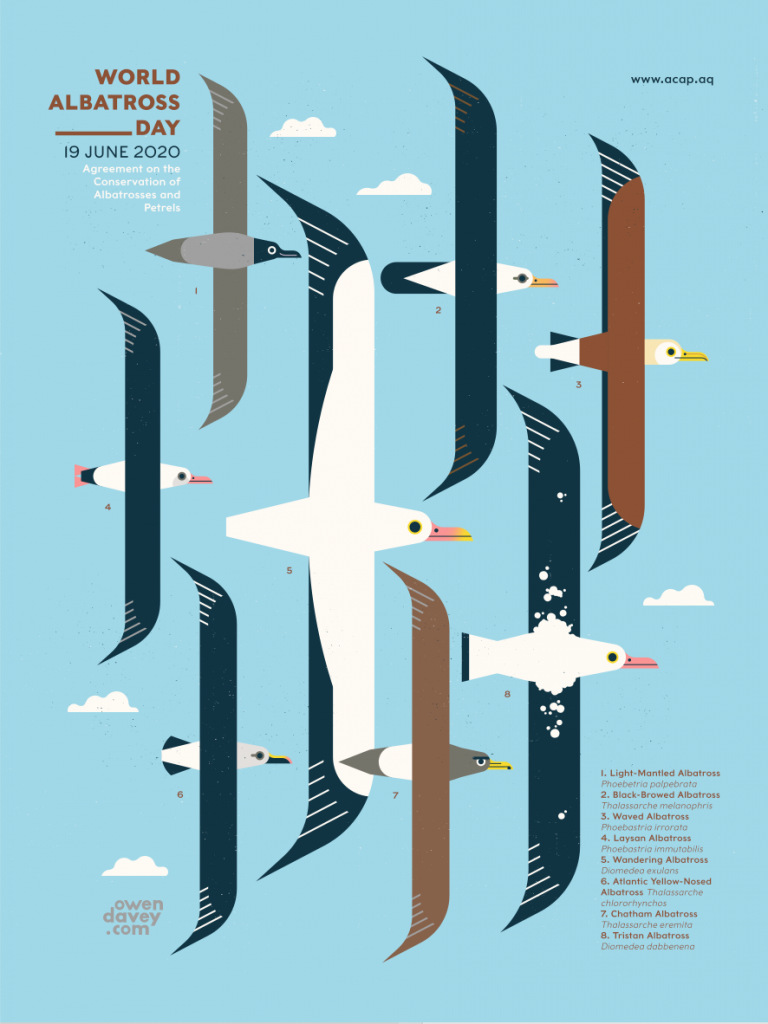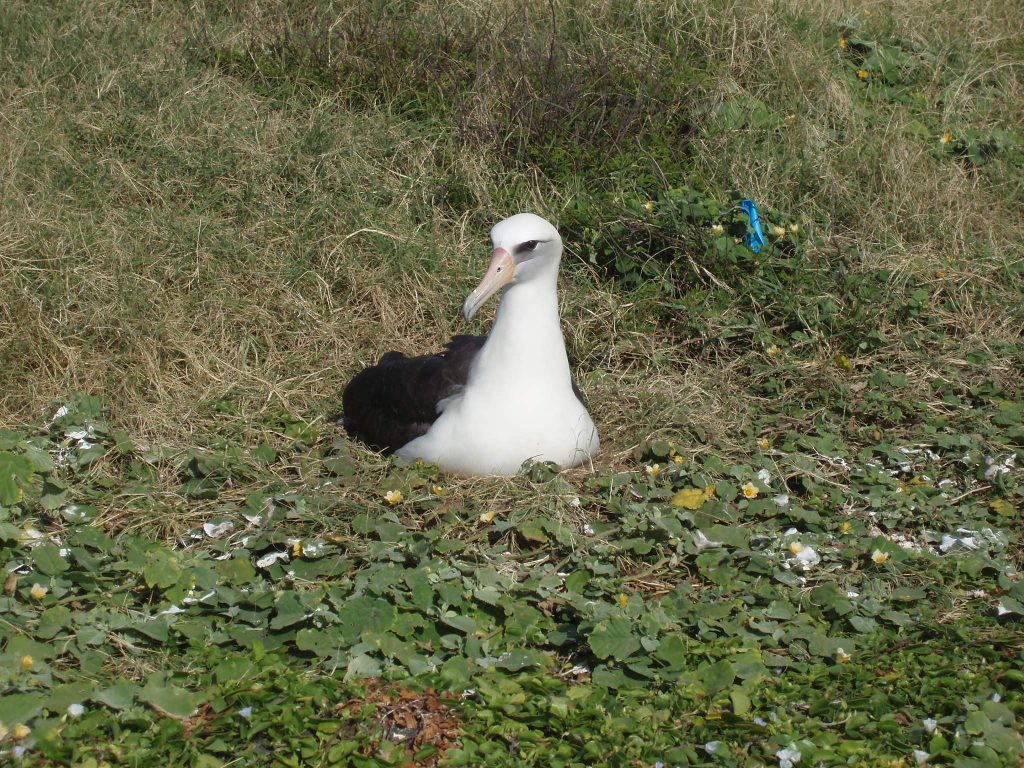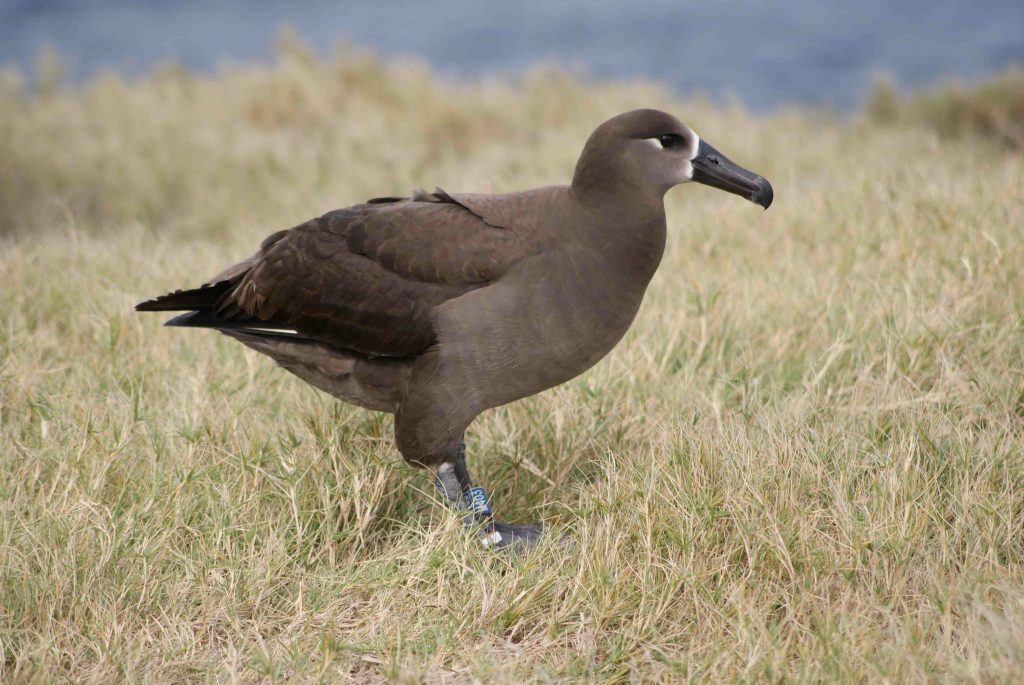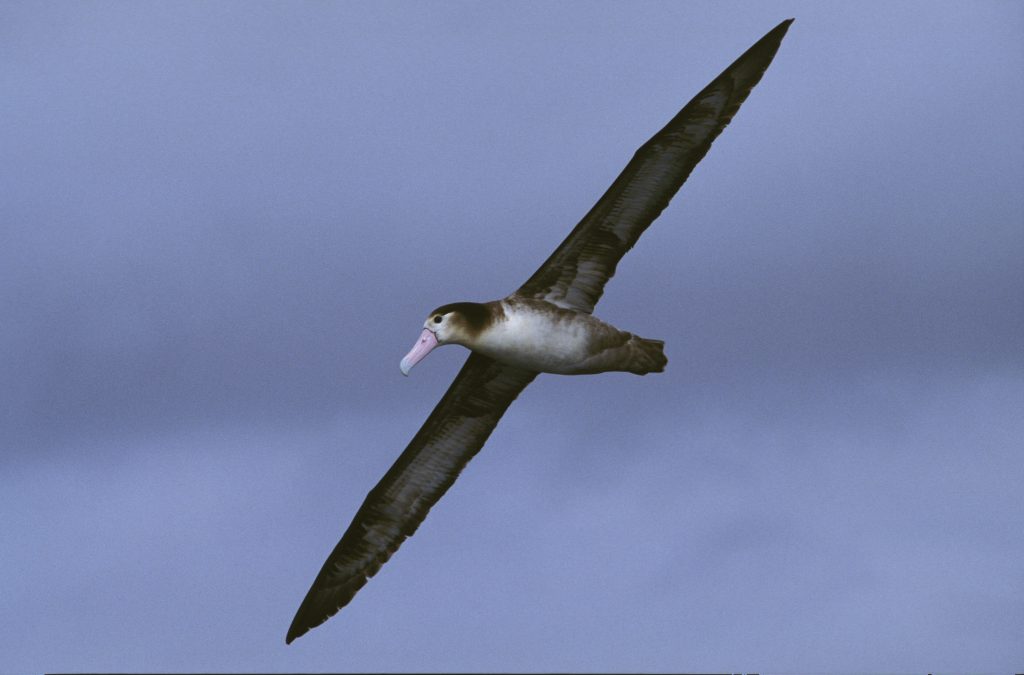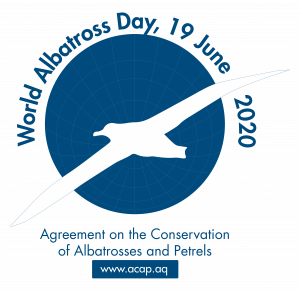
To raise awareness that thousands of albatrosses, petrels and shearwaters dying every year as a result of fisheries operations and other human-induced threats, the Agreement on the conservation of Albatrosses and Petrels (ACAP) is inaugurating a World Albatross Day (WAD), to be held annually from 2020 on 19 June, the date the Agreement was signed in 2001. The theme for WAD2020 is “Eradicating Island Pests”, chosen to highlight the threats albatrosses and petrels can also face on their breeding islands from introduced rodents, cats and pigs.
Theme of 2020 World Albatross Day – “Eradicating Island Pests”
Following discussion, and consideration of the main threats facing albatrosses identified in a recent review in the scientific journal Biological Conservation, the theme of Eradicating introduced pests at breeding sites of albatrosses, petrels and shearwaters has been chosen to highlight a continuing, but addressable, problem facing ACAP-listed species, many of which are threatened with extinction unless actions are taken. ACAP Parties without breeding populations (including some cooperating non-Party range states) will thus have an interest in conservation efforts conducted at the breeding sites of species that regularly visit their territorial waters and Exclusive Economic Zones – where they will be susceptible to interactions with domestic fishing vessels.
In 2020 attempts are being made to eradicate introduced House Mice Mus musculus on the UK’s Gough Island in the South Atlantic and on the USA’s Midway Atoll in the North Pacific. At both localities, mice have been attacking and killing albatrosses and their chicks. Planning and fieldwork are continuing in 2020 towards eradicating mice on South Africa’s Marion Island and on New Zealand’s Auckland Island (along with its feral cats and pigs). These, and other pest eradication projects at breeding sites of ACAP-listed species, will be highlighted in the build-up to World Albatross Day on 19 June 2020.
Introduction of Albatrosses in East Asian – Australasian Flyway
1. Laysan Albatross
Laysan Albatross, Phoebastria immutabilis, is a large seabird (length: 79-81 cm) with white-headed birds with dark gray-brown upper wings. It is the commonest albatross in East Asian waters, breeding range mainly (99% of nesting population) on the Northwestern Hawaiian Islands (NWHI), islands off Mexico and on remote Southern Japanese Islands. Non-breeding range is across the northern Pacific Ocean from about the latitude of Costa Rica to the Aleutian Islands, Kamchatkan Pacific Ocean and Southern Bering Sea.
The species is listed as Near Threatened (NT) by the IUCN. Main threats in breading sites in NWHI are invasion of rats and feral cats. Conservation or eradication of Polynesian rats have been successfully managed. This species is on the 2016 State of North America’s Birds’ Watch List.
2. Black-footed Albatross
Black-footed Albatross, Phoebastria nigripes, is a searbird (length: 68-74) with long, narrow wings and mostly dark except for a white ring around its long, thick bill. It breeds on oceanic islands across the tropical and subtropical North Pacific Ocean and adults concentrate nesting islands in Izu and Ogasawara islands of Japan and on Senkaku islands. In non-breeding season, it occurs off Japan, Kuril Island and in Kamchatkan Pacific Ocean and Bering Sea, also occasionally in Taiwan Strait.
The species is considered Near Threatened (NT) by the IUCN because it is taken incidentally by longline fishing. Main threats used to be feral cats on Northwestern Hawaiian Islands (NWHI) and mammals in NWHI, which the eradication has been taken effectively.
3. Short-tailed Albatross
Short-tailed Albatross, Phoebastira albatrus is a pelagic bird (length:84-94) with long narrow wings adapted for soaring just above the water surface. It spends most of its life over northern Pacific Ocean and breeds on islands off Japan and more recently, Midway Atoll. It breeds only on remote Izu and Senkaku Island and in non-breeding season disperses north in Yellow Sea, Northwest Pacific and Bering Sea. Short-tailed Albatross is a bird of the open ocean, riding the winds over the north Pacific along the coasts of eastern Russia and Asia, the Hawaiian Islands, and the Pacific Coast of North America.
Currently, Short-tailed Albatross population is estimated to be 7,365 birds and considered as Vulnerable (VU) by IUCN. Its population is on increasing trend but threats to P. albatrus remain high. Erosion, flooding and high winds blow chicks off their nests at Tsubame-zaki colony and black rats are common on Torishima despite habitat management efforts that have been undertaken.
Who are supporting World Albatross Day from EAAF?
1. Statement from Mr. Robert (Robb) Kaler, Chair of EAAFP Seabird Working Group
“The largest of seabirds, albatrosses are masters of gliding flight, sailing over the ocean for hours with no perceptible movement of their outstretched wings. Behavioural and physiological adaptations allow albatrosses to forage at great distances from their nesting areas on isolated and remote islands. Many albatrosses were heavily hunted on their breeding islands for the feather trade during the early 1900s and populations were seriously reduced. Albatross populations have bounced back but continue to be impacted by interactions with longline fisheries and exposure to marine pollution and plastics. With support from international initiatives like the East Asian-Australasian Flyway Partnership (EAAFP), which encourages participants to join the Agreement on the Conservation of Albatross and Petrels (ACAP), we will ensure that future generations will have a chance to see these and other amazing ocean wanderers which connect us and our oceans.”
2. Birds New Zealand
Birds New Zealand (formally known as the Ornithological Society for New Zealand) was established in 1940. It states on its website “Birds New Zealand is committed to the study of birds and their habitat use within New Zealand through encouraging members and organising projects and schemes.
Bruce McKinlay, The President of Birds New Zealand, writes to ACAP Latest News in support of this year’s inaugural World Albatross Day “Understanding and marvelling about the wondrous journeys that albatrosses make in the Southern Ocean is an obsession for many New Zealanders. They link us as an island nation to many other parts of the globe and emphasise that the conservation of these magnificent birds is an international priority”. Read more about their work, click [here].
3. The Yamashina Institute for Ornithology
The Yamashina Institute for Ornithology was established in 1942. The institute conducts ornithological studies and research, as well as bird banding commissioned by Japan’s Ministry of the Environment and promotes public awareness of ornithology by publishing academic journals featuring research articles, and newsletters introducing research activities in an easy-to-understand format.
Dr. Kiyoaki Ozaki, Yamashina Institute’s Deputy Director General writes to ACAP Latest News: “The Short-tailed Albatross was once on the brink of extinction with less than 100 individuals but has now increased to over 5000 thanks to persistent international conservation efforts. However, there are many more albatross species in need of conservation action. World Albatross Day 2020 is an excellent opportunity to remind us of their needs, and that we can still save these magnificent birds”. Read more about their work, click [here].
4. The Australasian Seabird Group
The Australasian Seabird Group (ASG) is a special-interest group of BirdLife Australia, the country partner of BirdLife International. The Group’s objective is to “promote seabird research and conservation in Australasia”.
The Convener of the ASG’s Executive Committee, Barry Baker has written to ACAP Latest News: “Many albatrosses and petrels are threatened with extinction and only slight increases in the mortality of adults can rapidly reduce populations within a couple of decades. In a world where there is a focus on the sustainability of extractive industries it behoves fishers and fishery managers to take all necessary steps to reduce the impacts of their activities on non-target species, including seabirds.” Read more about their work, click [here].
‘Flight of the Albatross’. A music video by Artists & Biologists Unite for Nature on behalf of World Albatross Day, 19 June 2020
Information from the Agreement on the conservation of Albatrosses and Petrels (ACAP)
Reference of species:
- ACAP species assessment https://acap.aq/en/acap-species
- Mark Brazil (2009) Birds of East Asia: China, Taiwan, Korea, Japan, and Russia. Princeton University Press


